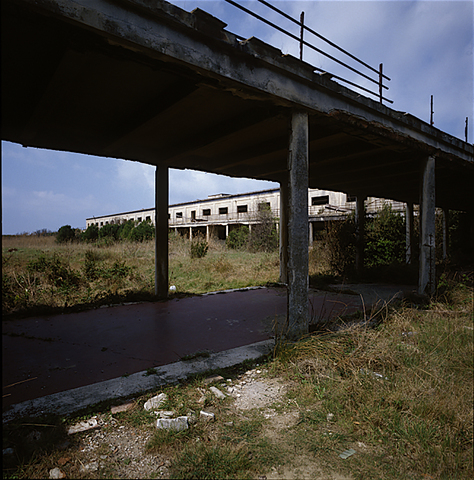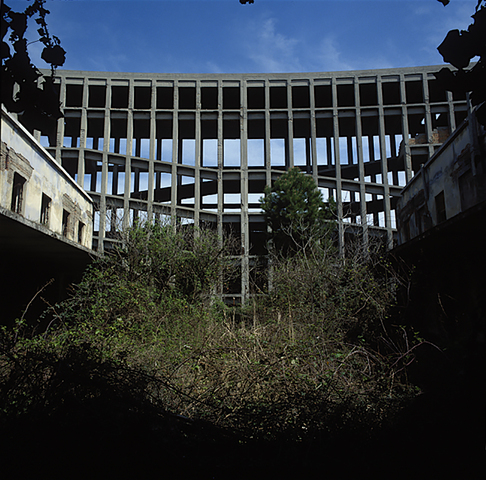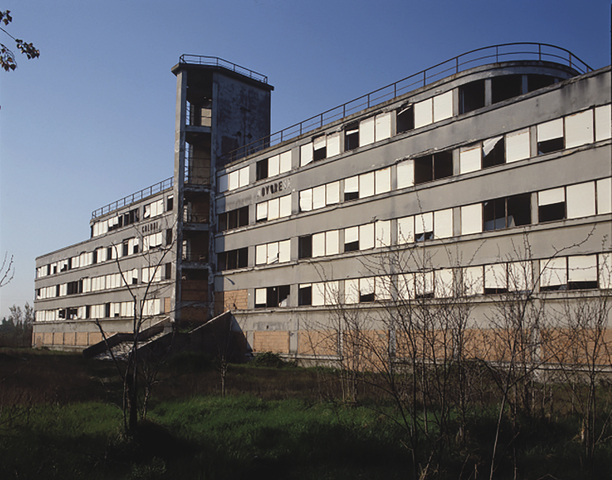Paper presented at the 'Big Ruins: The Aesthetics and Politics of Supersized Decay' conference, organised by the Centre for Interdisciplinary Research in the Arts and Languages at University of Manchester.
The project ‘Derelict Utopias: The Ruin Vanishes’ builds on a previous photographic essay on modern ruins (‘Derelict Utopias’ published in Cabinet magazine, Winter 2005/6), which documents abandoned youth hostels (or colonie) on the Italian coast, built during the Fascist era. Fascist architecture proved problematic to post-war Italy, providing a conflicted reminder of a past project of modernising aspirations combined with totalitarian regimentation. Their project was to transform generations of children into fit, healthy, modernised and co-operative individuals, who, as adults, would transform the Italian state.
The initial aim of the paper was to explore the compelling yet troubling nature of relatively recent ruins where a vision of a new future had become past. But major changes had overtaken some of these derelict edifices and a casual Google search disclosed something unexpected: the absence of ruin. Some of the larger and more significant sites been entirely refurbished and, in the main, converted into holiday flats. Consequently, the focus of the study expanded, and this new aspect added a further layer. Whatever these structures had represented was gone, but the colonie occupied prime locations and developers had moved in with a different vision and a new set of priorities.
This paper considers the ruin as a photogenic site of intersecting ideas and perceptions: history, nostalgia, utopia, progress, the picturesque and the social. However, some of these colonie have been refurbished, some have aged again, some have remained derelict and face collapse or demolition. What they stand for is, paradoxically, both overwritten and made relevant again. This aspect involves an exploration of what Umberto Eco calls ‘resemanticization’ (Eco in Broadbent, 1980). The paper ponders the ruin not just as phenomenon but also as an elusive photographic subject, itself unstable, with its documentation impossible to finalise.




